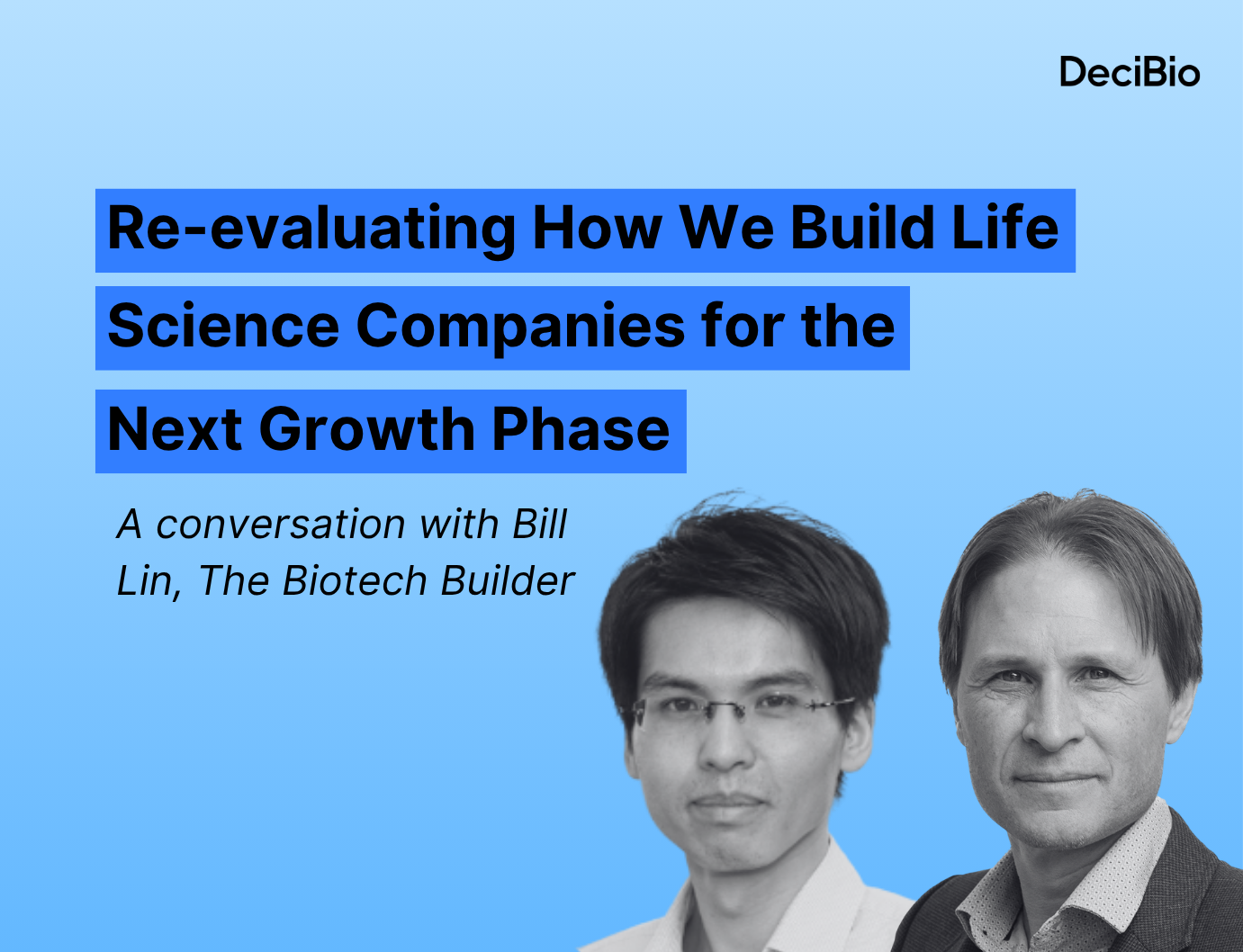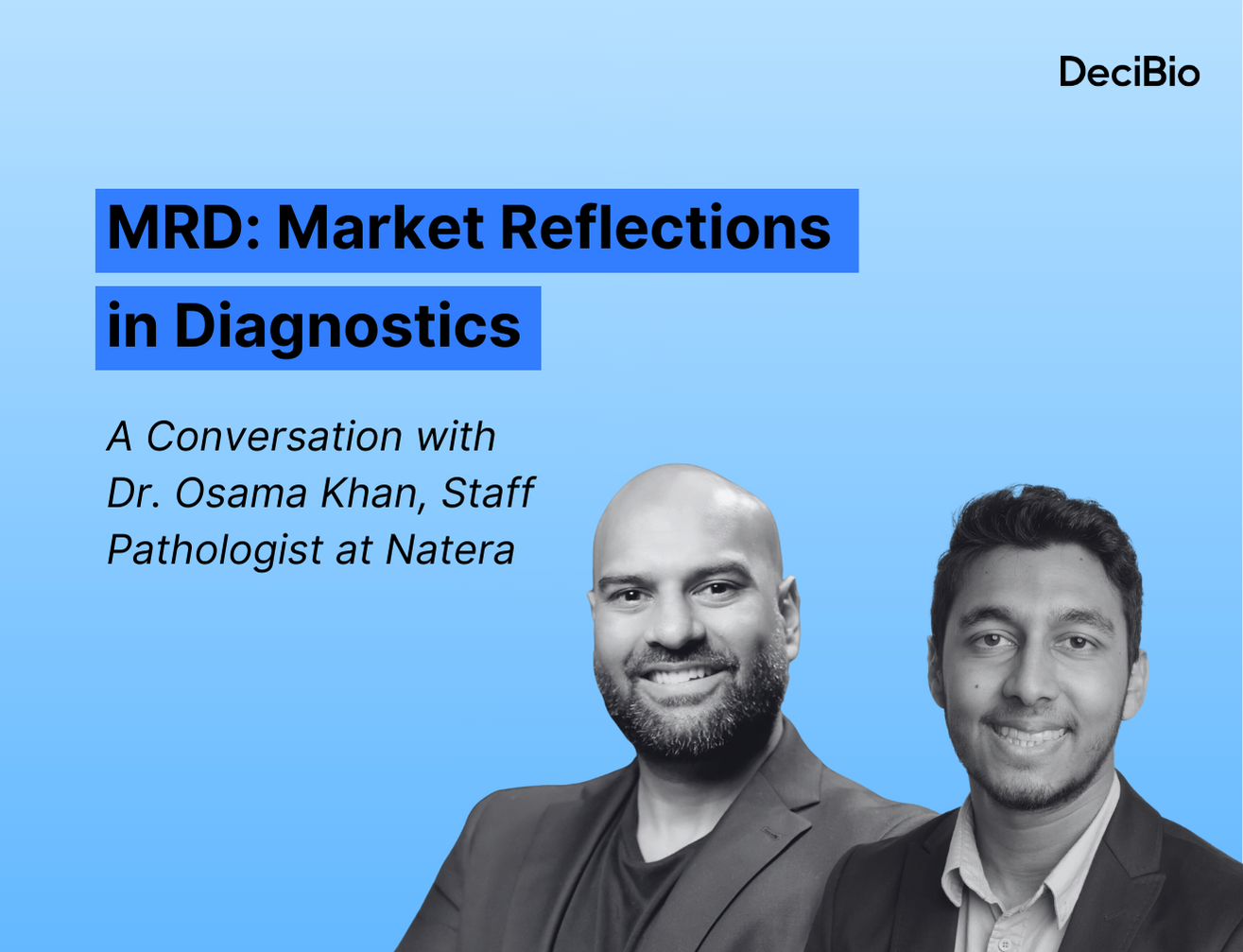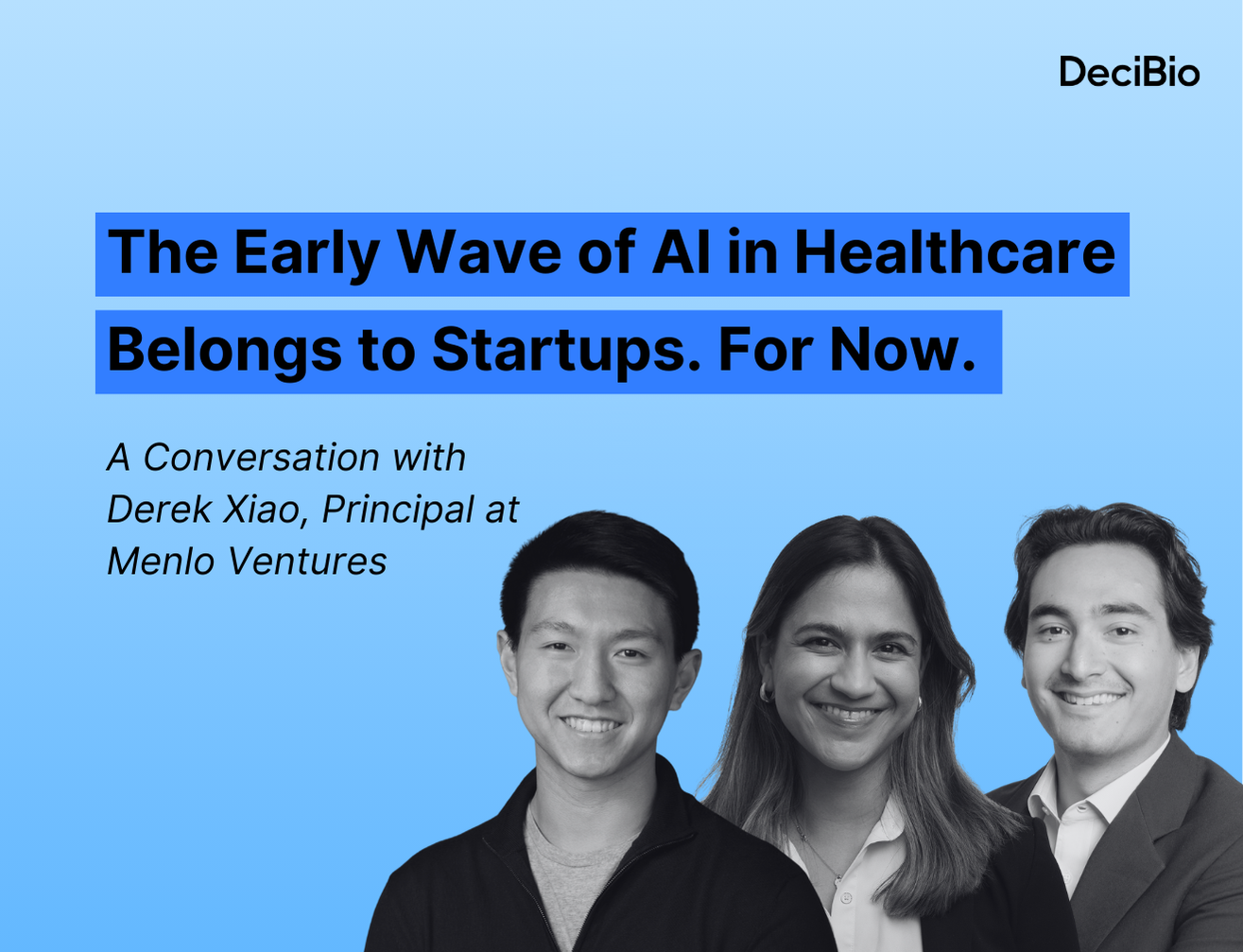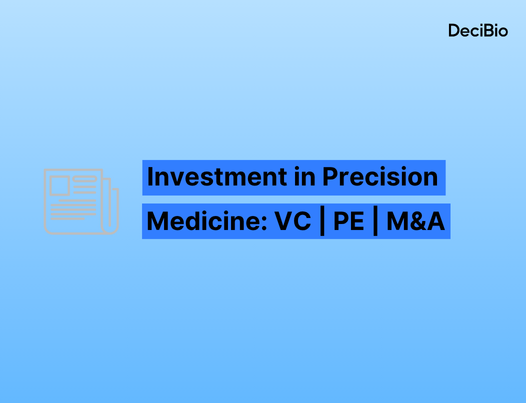A dialogue between DeciBio and the Biotech Builder (TBB)
The Structural Challenge
DeciBio: Why do so many life sciences companies feel fragile, even after years of scientific progress and investment?
TBB: The life sciences industry has long championed breakthrough science and transformational products that improve lives. But behind the storyline lies a simmering structural problem that has become more noticeable after the COVID-fueled boom in our industry – that many companies are built on new but unproven product concepts that require years of pre-revenue operation, burning through cash while waiting for a product uptake, regulatory milestone, or scientific breakthrough. This approach has produced remarkable successes in some cases, but it also leaves many companies vulnerable, especially during difficult financial times.
DeciBio: We see the same pattern. What’s striking is that this fragility isn’t just about scientific risk, it’s structural. Financing models, hiring choices, and scaling strategies often amplify vulnerability. Which brings us to the next question…
The Business Model and Current Capital Structure Challenge
DeciBio: How does today’s venture capital model shape the kinds of companies that get built?
TBB: The current venture capital dynamics play a significant role in how these new companies are structured and the type of ideas they pursue. As fund sizes continue to grow at the top VC firms, the amount of capital invested on a per-deal basis has to increase substantially to warrant a ROI that is impactful for the fund as a whole. This often means that VCs have no choice but to deploy capital to fund “moonshot” ideas which follows the traditional model of high burn rates, carrying long timelines to revenue, and sometimes hinge on binary outcomes.
On the other hand, smaller, pragmatic ventures that aim to solve “secondary” problems like lab management optimization, regulatory operational improvements, and simpler bio-tools products are often overlooked. Yet these “smaller” ideas can become the foundation of great businesses, as they can go-to-market, test product-market fit, iterate on mistakes, and generate traction (and delight customers!) much earlier than their moonshot counterparts.
The challenge for these types of ventures to attract capital is the mismatch between their scale of ambition and the funding models currently available. To create a more sustainable and diversified life sciences ecosystem, the industry needs to broaden its definition of success and support business models that emphasize adaptability and value creation.
DeciBio: Exactly. The “moonshot-or-bust” model isn’t sustainable on its own. What’s missing is a healthy middle class of ventures, not just billion-dollar unicorns or stranded orphans, but cash-flow-positive companies solving immediate problems. This is especially critical in diagnostics, where tests drive ~70% of clinical decisions but capture just ~2% of healthcare spend. Without structural support for these pragmatic ventures, we risk stalling adoption of tools that could transform care. So let’s ask: if capital efficiency is only half the battle, what about talent efficiency?
Hiring as a Strategic Lever
DeciBio: Beyond financing, how are hiring models shifting as markets tighten?
TBB: During market boom times, a venture-backed company grows a team of full-time staff to align with growth ambitions. However, in current market conditions, as investors emphasize revenue traction over ambitious projections, companies must think strategically on increasing the efficiency of their R&D operations.
In light of this, some companies are having to make the difficult decision of conducting large-scale layoffs, and some are leaning into hiring specialized consultants and contractors to fill critical gaps, allowing these companies to progress toward milestones without overcommitting to long-term payroll obligations. Spending on an as-needed approach not only provides agility, but also creates job opportunities for scientists and engineers impacted by downsizing. For many, consulting offers the chance to apply deep expertise across multiple innovation pipelines, keeping them engaged while continuing to contribute to the life sciences and eventually to the patient community.
DeciBio: That’s a smart shift. In fact, we’d argue talent flexibility is now just as important as capital flexibility. The strongest young ventures may be those built around a stable core and flexible outer layer model; founders and essential staff at the center, surrounded by modular consultants, CROs, and advisors that can flex with evolving needs. This isn’t just a stopgap; it can be a structural advantage, ensuring access to expertise without the drag of long-term fixed costs.
Where Business and Hiring Models Intersect
DeciBio: So, if adaptability is emerging as a theme in both capital and hiring, what happens when we put the two together?
TBB: When viewed together, the business and hiring models reveal a common theme that adaptability is a competitive advantage as this industry continues to face capital and regulatory headwinds. Life sciences ventures that align lean, sustainable business strategies with agile hiring practices are better positioned to survive capital droughts, seize emerging opportunities, and most importantly, build sustainable businesses.
A company optimizing sustainability rather than hyper scaling may choose revenue-based financing or strategic partnerships instead of chasing mega-rounds. That same company can reinforce its resilience by structuring its team around a stable core of founders and key personnel, supplemented by extensible consultants who can cater with the changing needs of a young company. Both models—financial and organizational—work in concert to maximize flexibility while minimizing unnecessary capital and operational risk.
DeciBio: Agreed! But here’s the rub: in precision medicine, scientific innovation is outpacing business model innovation. Multi-omics, liquid biopsy, and AI pathology are moving fast, but without rethinking financing and staffing models, too many ventures get trapped in the “valley of death” between proof-of-concept and adoption.
Building Life Sciences’ Next Chapter
DeciBio: How do we build companies that are as innovative in structure as they are in science?
TBB: Innovation will always define life sciences’ future, but it cannot be limited to the same way of doing business. To thrive in an ever-changing macro environment, companies must also innovate in how they structure their businesses.
By broadening the definition of success, embracing alternative financing/revenue models, and adopting flexible hiring modalities, companies can move beyond its reliance on fragile, all-or-nothing bets. Instead, it can foster a more diverse and resilient ecosystem—one where both bold moonshots and practical, cash-flow-positive ventures can coexist and thrive.
DeciBio: Love it! Innovation in science has to be matched by innovation in structure. That means:
- For investors: designing new vehicles for pragmatic ventures alongside moonshots.
- For operators: building models that flex with cycles, not against them.
- For the ecosystem: elevating diagnostics and tools (too long undervalued) as central drivers of healthcare transformation.
The next chapter won’t just be about what we discover in the lab. It will be about how we finance, hire, and scale the companies that bring those discoveries to patients. Thanks for your time and insights, Bill!
_______________________
Note: Some of the companies listed in this article may be DeciBio Consulting clients.
Author: Stephane Budel, Partners at DeciBio Consulting, LLC
Connect with Stephane on LinkedIn



.png)




